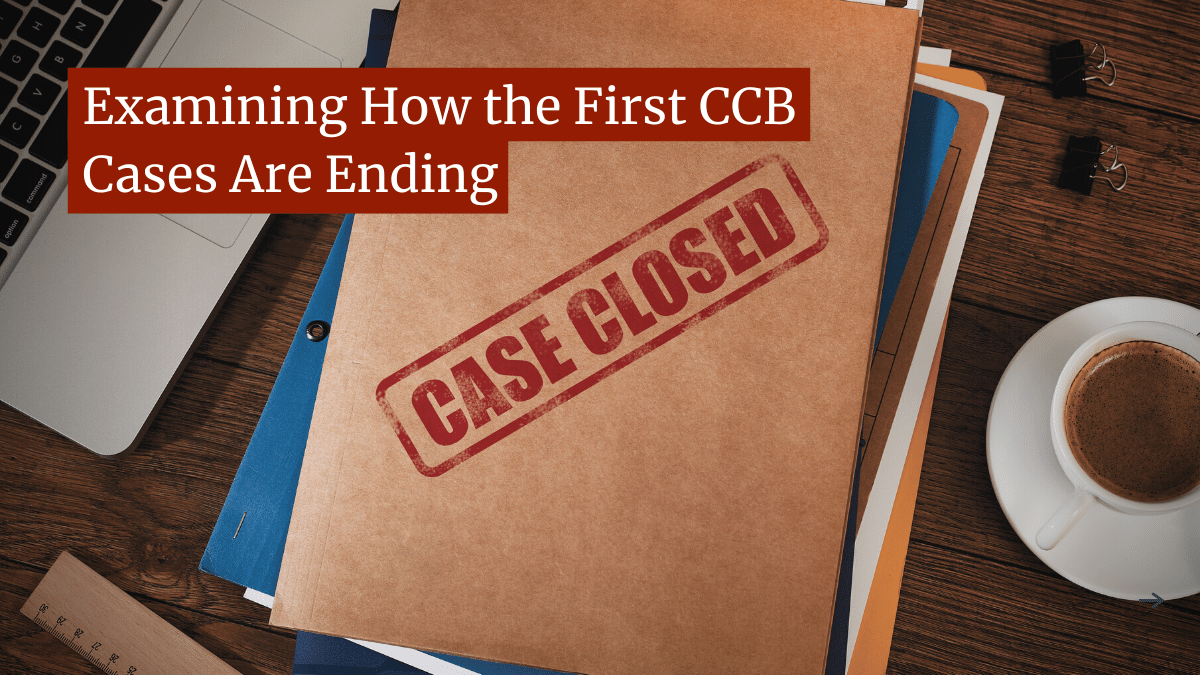How are the First Copyright Claims Board Cases Ending?

The Copyright Claims Board (CCB) is the new copyright small-claims court that was introduced in the CASE Act, which as passed in December 2020. The court itself has been open since June of this year and, as of this writing, some 151 cases have been filed with it.
Of those 151 cases, some 11 are already closed.
To be clear, none of the cases before the CCB have actually been decided by the board itself.
The process is proving to be time-consuming, with the CCB often taking months to decide if a claim is valid and then requiring a service of the respondents and a 60-day window for them to opt out. In short, no cases have progressed to that point.
As such, all the cases that are closed ended before the CCB were closed before the board had a chance to rule. While this means these cases aren’t good guidance as to how the CCB is going to rule, it is guidance on what the most likely causes of a case being set aside are.
With that in mind, it’s worth taking a quick dive into the data and see why these first 11 cases came to an end.
11 Cases, 3 Outcomes
When looking at the 11 closed dockets before the CCB, there are three different causes of them being closed before making it to an actual hearing.
- Opt-Out (5 Cases): The CCB allows respondents to simply opt out of proceedings. Though cases can be refiled in a federal court (where much higher damages are on the table), they cannot be refiled with the CCB.
- Withdrawal/Settlement (2 Cases): Claimants can voluntarily withdraw the case, something that is common after a settlement has been reached.
- Issue with the Claim (4 Cases): Finally, issues with the claim itself can cause the CCB to close the docket. This can include anything from a problem with the original filing to not filing an amended claim in a timely manner.
Of the outcomes, the opt-outs are the ones most people are watching. Given the voluntary nature of the CCB, there was a great deal of concern that respondents would simply opt out of the proceedings.
To that end, these early numbers may look damming. Nearly half of the closed cases are closed due to an opt-out. However, it’s important to remember that this represents only a small portion of the cases where the CCB has allowed the case to move forward. Most of the cases are still either waiting on service or service has been completed, but there has been no response.
In short, over the next few months, we’ll likely see a spike in the number of opt-outs, the number of cases where service wasn’t completed and defaults (cases where service was completed, but the respondent didn’t opt out).
However, since claimants have 90 days to perform service and respondents 60 days to opt out, it’s likely going to be several months before we have any real numbers there. This is especially true since many cases required an amended claim, which can add another month to the process.
Also interesting is the number of cases dismissed due to issues with the case itself. These issues are incredibly variety, ranging from a request for an amended complaint that went unanswered, the lack of payment when filing the case and the case simply being filed with the wrong body.
On the positive side, two of the cases were voluntarily dismissed, meaning that they were likely settled. Though there is no way to confirm this, that is the most common reason for such a voluntary dismissal.
This is the greatest hope for the CCB, that it can be used to compel settlements that both sides find fair. It’s a tool to bring infringers to the negotiating table.
In that regard, the CCB has already had some success, even if it is only a fraction of cases.
Bottom Line
Admittedly, this is a thought exercise. Eleven cases is nowhere near enough to draw any significant conclusions. That said, there is a pattern emerging.
Though many questioned how many respondents would agree to participate in the process, it’s becoming equally unclear how many claimants are taking the process seriously.
Behind these numbers, there are many cases where amended complaints are sought, where service is required or some other feedback from the claimant is needed and either it is not being done or taking a very long time.
Though this court was billed as a means for individuals to bring their own cases without the aid of a lawyer, it seems at least some are struggling.
Still, the real test of the CCB is to come. Eleven cases is simply not enough to draw any conclusions. With 151 cases filed before the court, that represents just 7% of the cases filed and none represent a decision by the CCB itself.
All that this shows is that there are issues to watch, and that much has been made very clear by these numbers.
Want to Reuse or Republish this Content?
If you want to feature this article in your site, classroom or elsewhere, just let us know! We usually grant permission within 24 hours.
